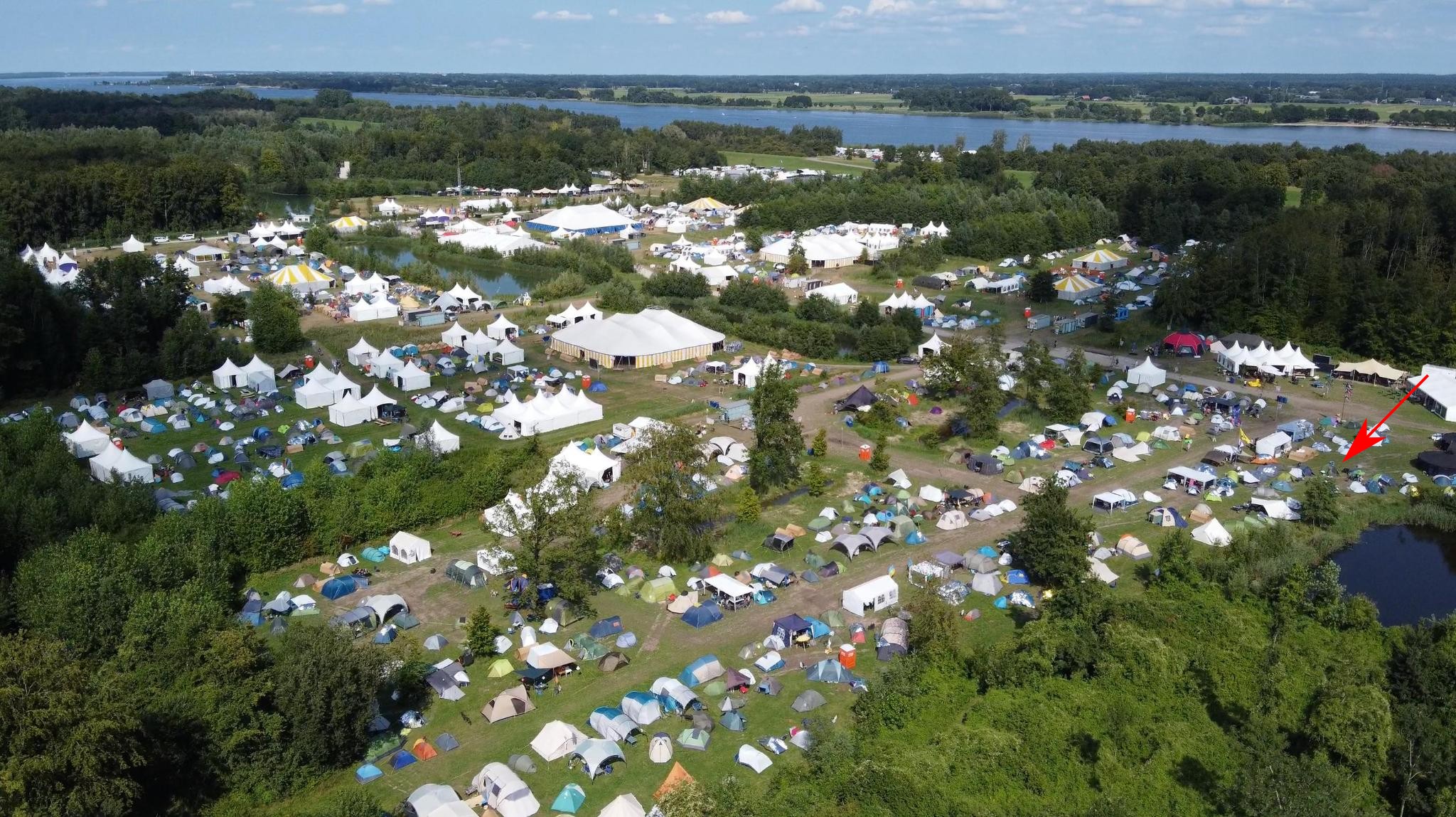MCH2022: DNA and GPS/Galileo/GNSS Talks
(scroll down for my two talks if you are in a hurry)
As I write this I’m suffering from severe post-camp blues. Every four years the Dutch hacker community organizes a stupendously large multi-day campsite event, with ample international help. To a large extent, “everyone” is there. And this time, like every time, people who originally decided they could not make it.. show up by day two. Because the pull is just too strong. Over 3500 people attended the event.

Red arrow points towards my tent in our little IRC channel village. Source
Organizing such an event is a massive undertaking, and it requires a ton of volunteers. MCH2022 was originally slated to be MCH2021, and I was part of Team:Content for 2021. And I can tell you, Corona nearly broke us. Not only was it uncertain if the event would happen in 2021 or in 2022, we were seriously worried if it could ever happen again.
It is a huge credit to everyone involved that MCH2022 happened almost like normal. And not only that, everything was sold out. It was a roaring success! Thank you all volunteers, orga, teams, angels, speakers, villages, visitors!
And before we head to my talks, a special round of thanks for MCH2022 Team Productiehuis and Chaos Computer Club Video Operation Center for their most excellent audio and video services!
There was a huge amount of great content, and nearly all talks are already available for viewing
Hacking the genome: how does it work, and should we be?
On Friday, I presented an introduction to DNA, how it works more or less, and how we can edit it, what that could achieve and if we should be doing (more) of that. Here are the slides, and here is the video (direct link):
Erratum: this video starts with an embarrassing mistake. Where I say ‘shell code’, I mean ‘payload’. Apologies for that.
How do GPS/Galileo really work & how the galmon.eu project monitors all navigation satellites
For my second talk, I presented on Global Navigation Satellite Systems like GPS, Galileo, BeiDou and GLONASS, and how they really work. The technology behind these systems is fascinating and far more interested than generally presented. Although GNSS is super important, up to recently no good monitoring was publicly available. The “galmon.eu” project changed this.
In this talk I cover:
- How your phone really figures out where it is (so it can sell more expensive ads)
- How the “satellite ephemeris” is broadcast, what it means
- What is really in this ‘assisted GPS’?
- The extensive ground infrastructure that is active 24/7 to determine the satellite orbits so GNSS is precise enough to tell which store you are in, or which side of the road you are driving on
- How GNSS are monitored in public by 100 Galmon.eu volunteers, running open source receivers all over the world
- And the research we enable
- Discussion of suitable hardware and GNSS-SDR that allows hackers to see each and every bit coming from the satellites
- A brief part on how GNSS can be spoofed and jammed, and the odd cryptography used to help detect or prevent this
The goal of this presentation is to expose the fascinating reality behind that little circle on your maps app, but also to explain how vulnerable this system is, which is why we need to monitor it closely.
Here are the slides, and here is the video (direct link):
